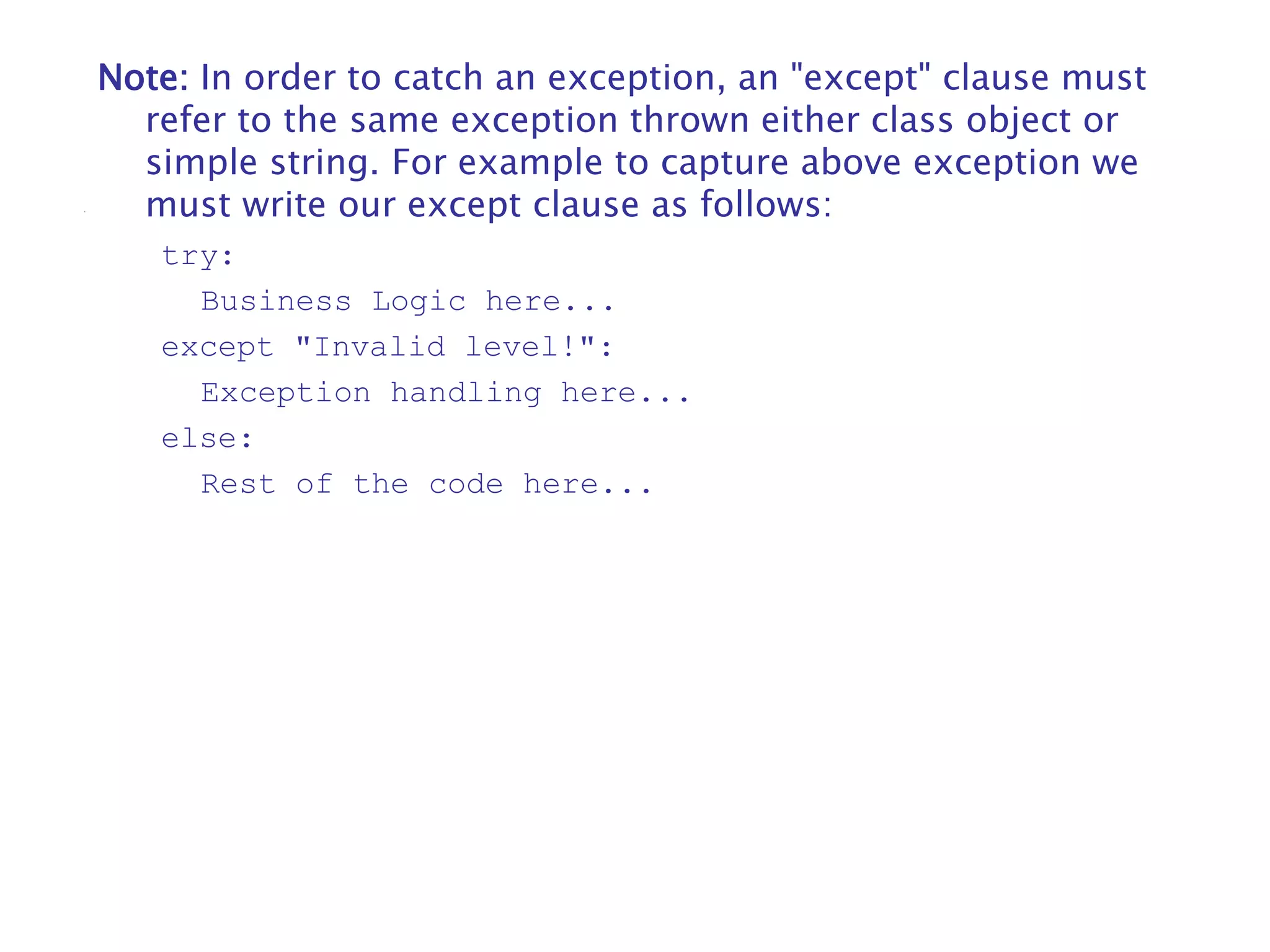Python provides exception handling to deal with errors during program execution. There are several key aspects of exception handling in Python:
- try and except blocks allow code to execute normally or handle any raised exceptions. except blocks can target specific exception types or be general.
- Standard exceptions like IOError are predefined in Python. Developers can also define custom exception classes by inheriting from built-in exceptions.
- Exceptions have an optional error message or argument that provides more context about the problem. Variables in except blocks receive exception arguments.
- The raise statement intentionally triggers an exception, while finally blocks ensure code is always executed regardless of exceptions.
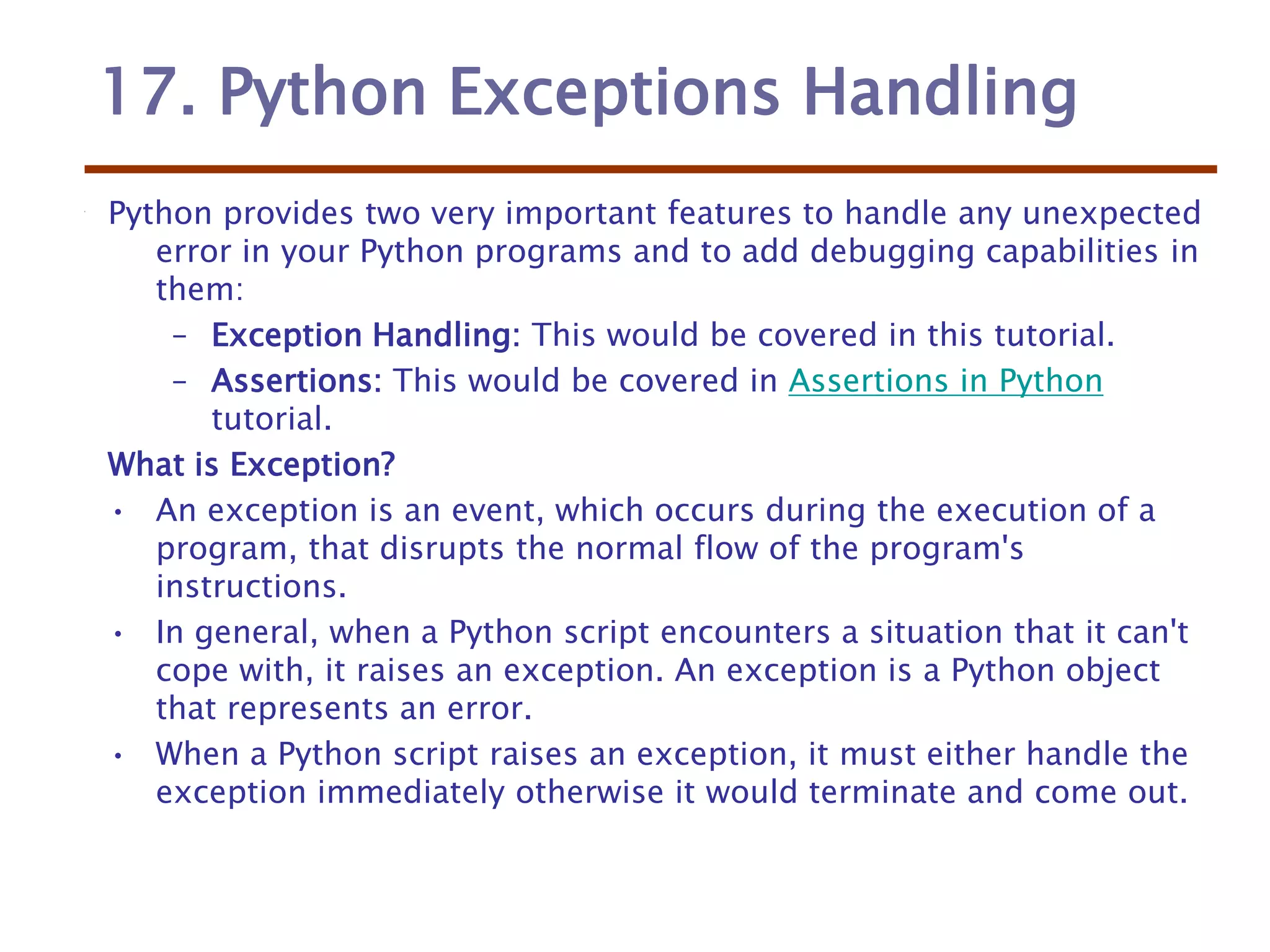
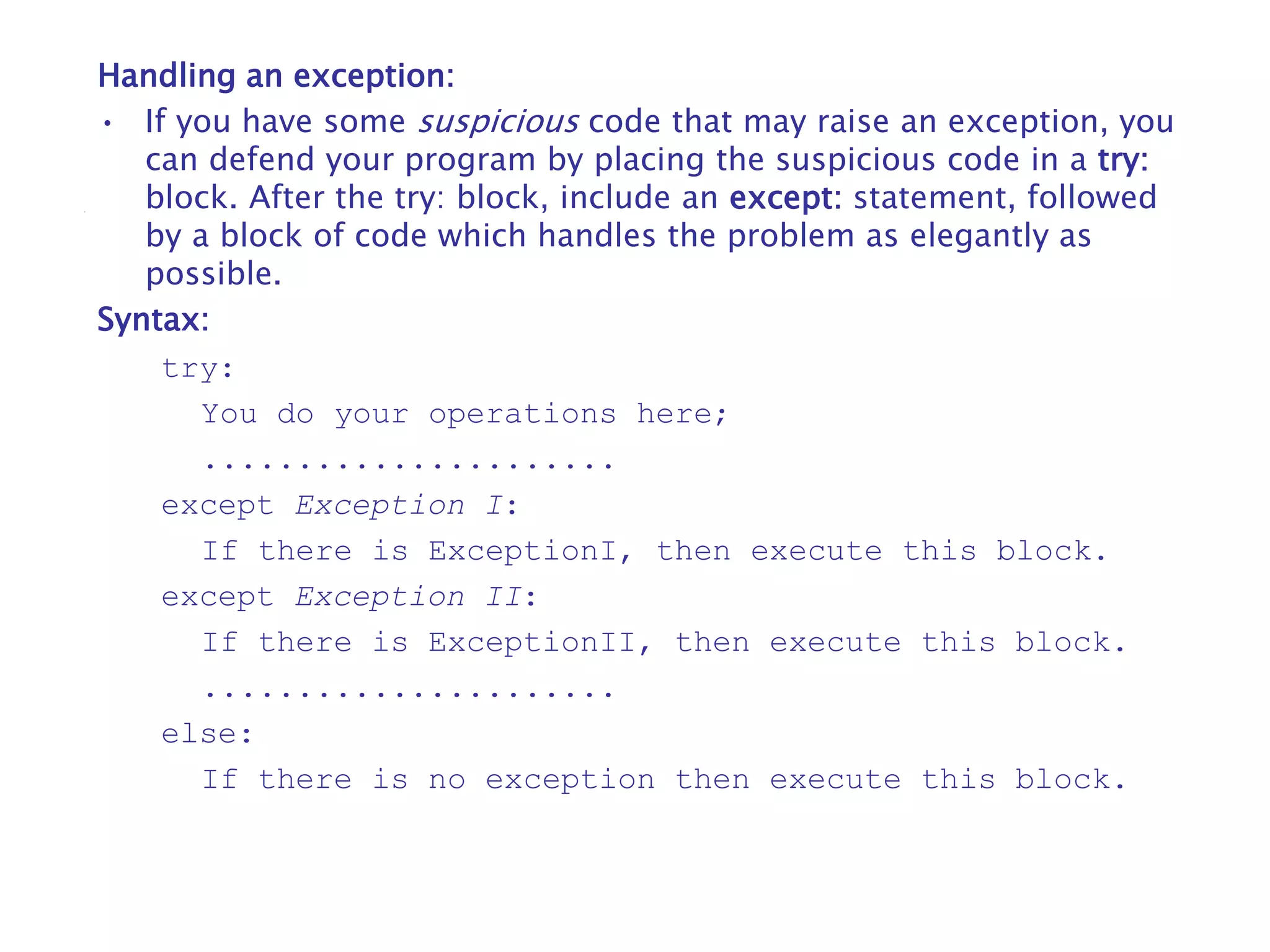
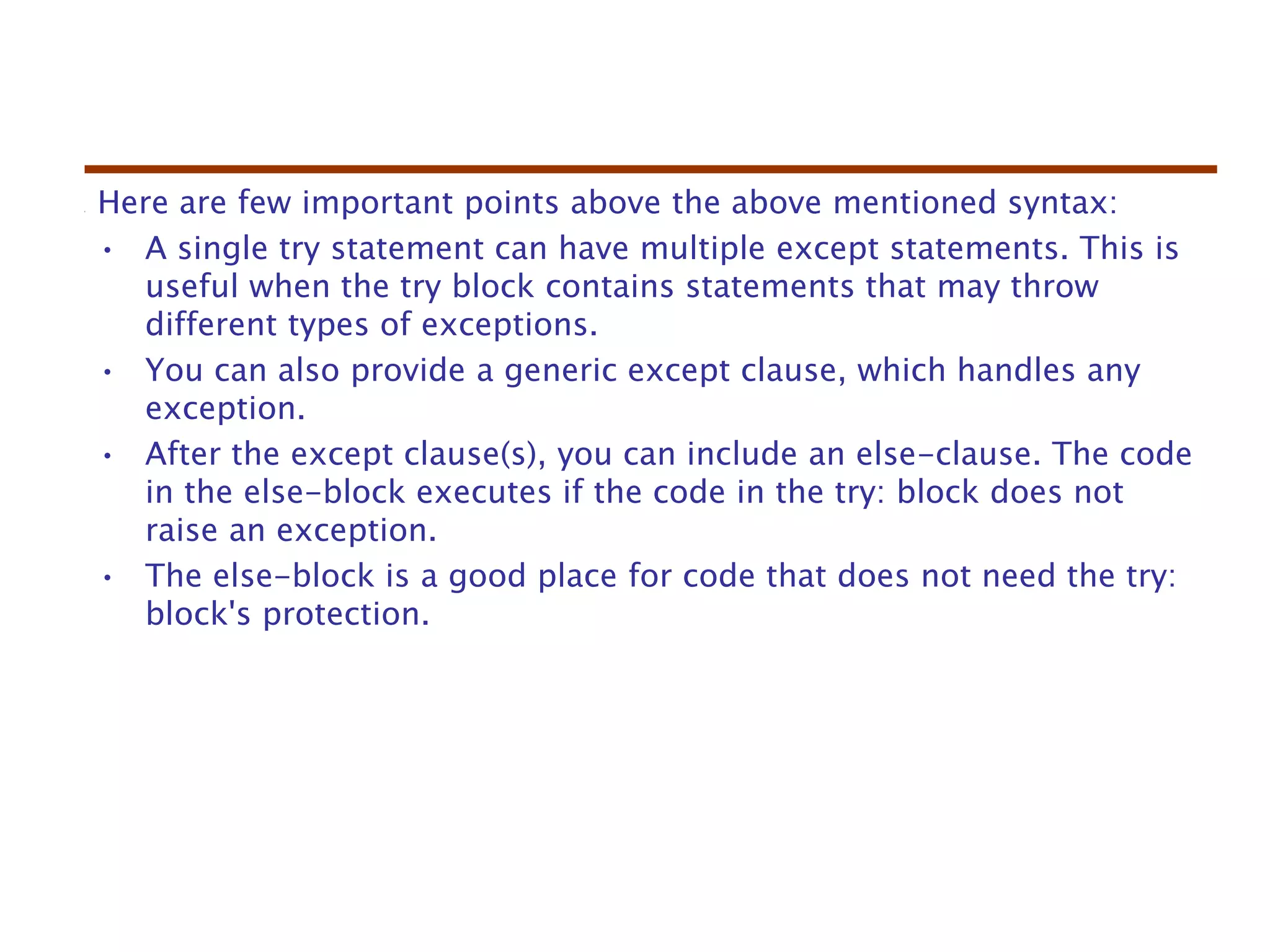
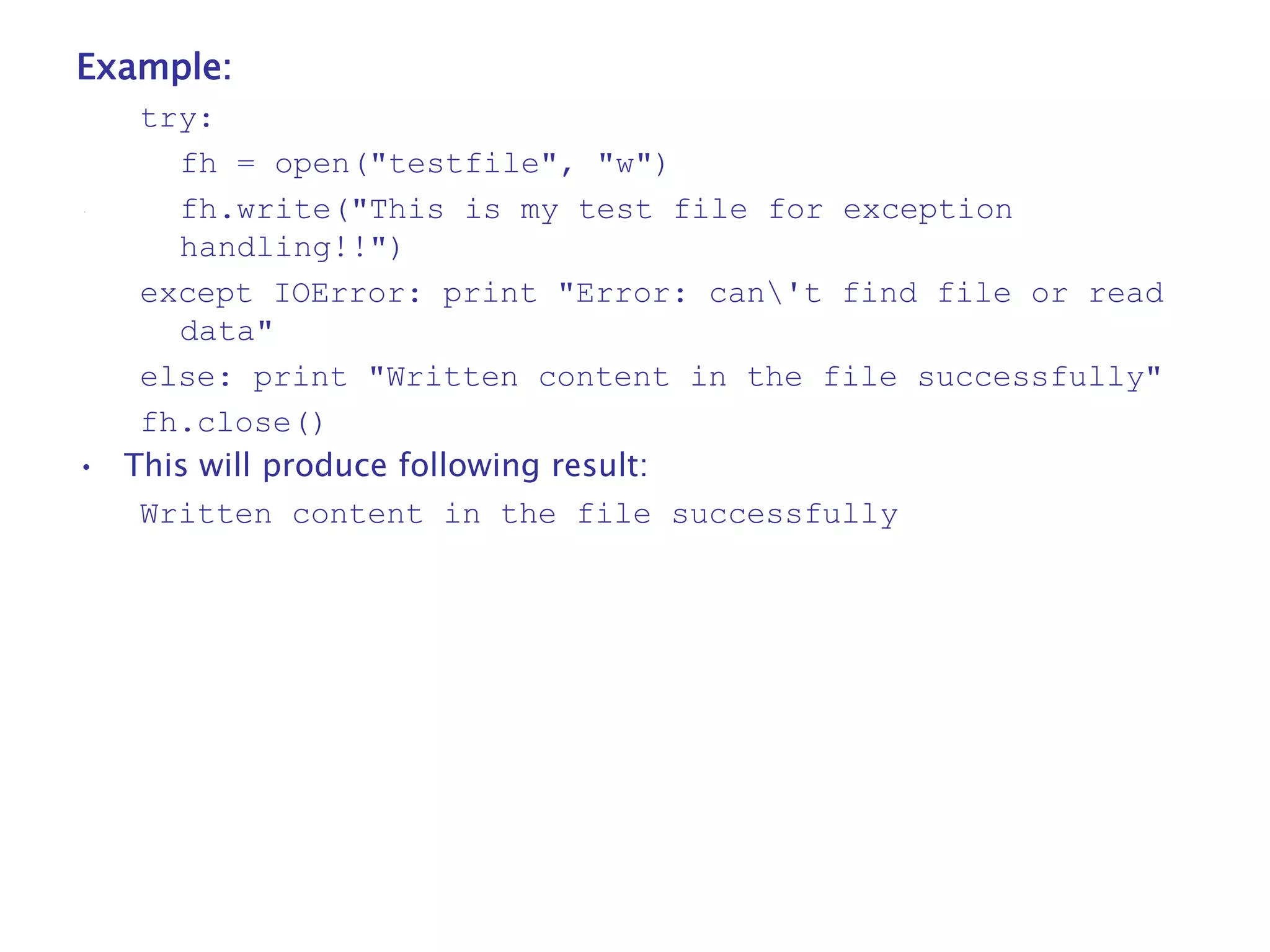
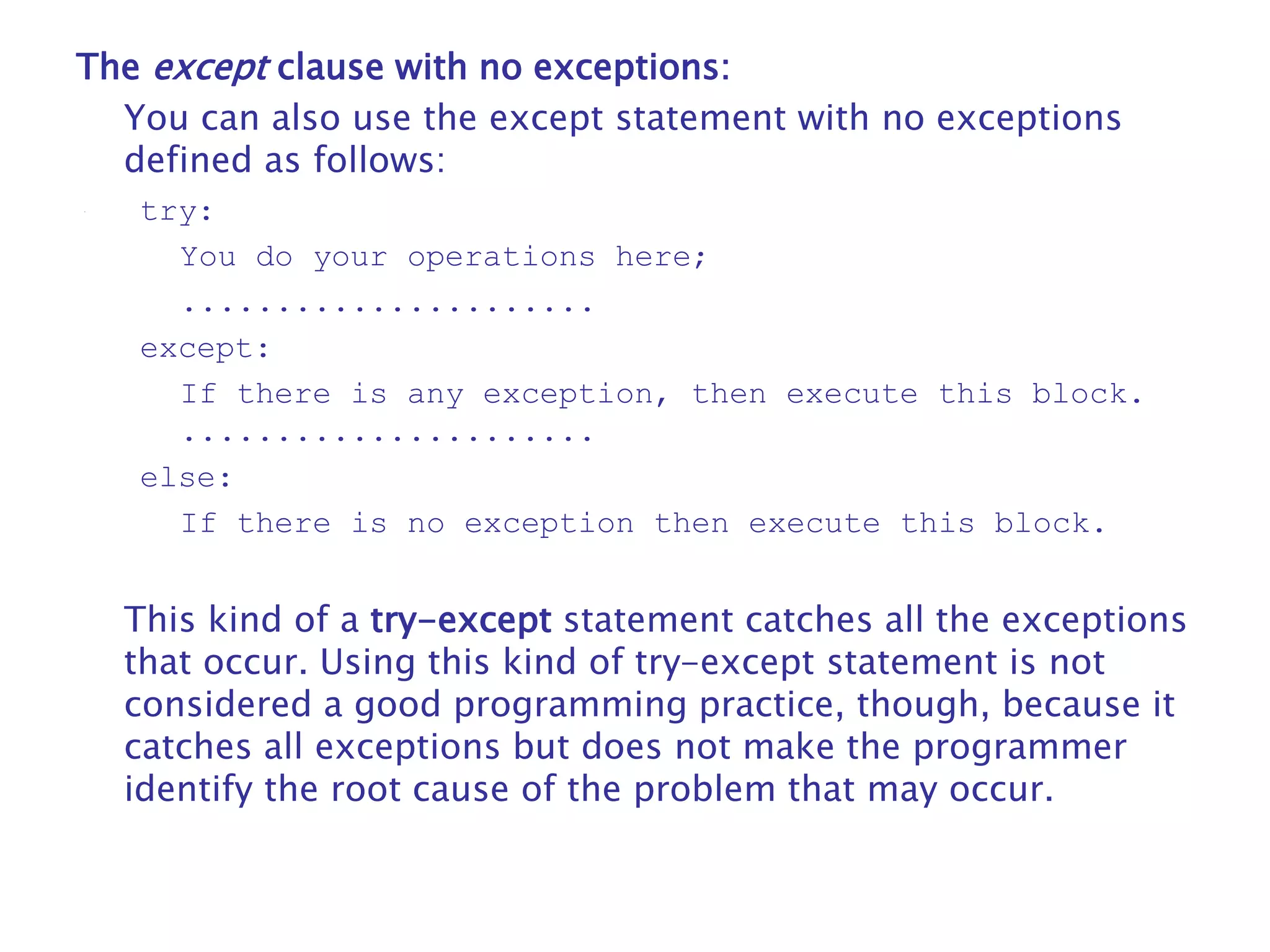
![The except clause with multiple exceptions:
You can also use the same except statement to handle multiple
exceptions as follows:
try:
You do your operations here;
......................
except(Exception1[, Exception2[,...ExceptionN]]]):
If there is any exception from the given exception
list, then execute this block
.......................
else:
If there is no exception then execute this block.](https://image.slidesharecdn.com/py-slides-9-230510132101-3c28df13/75/Py-Slides-9-ppt-6-2048.jpg)
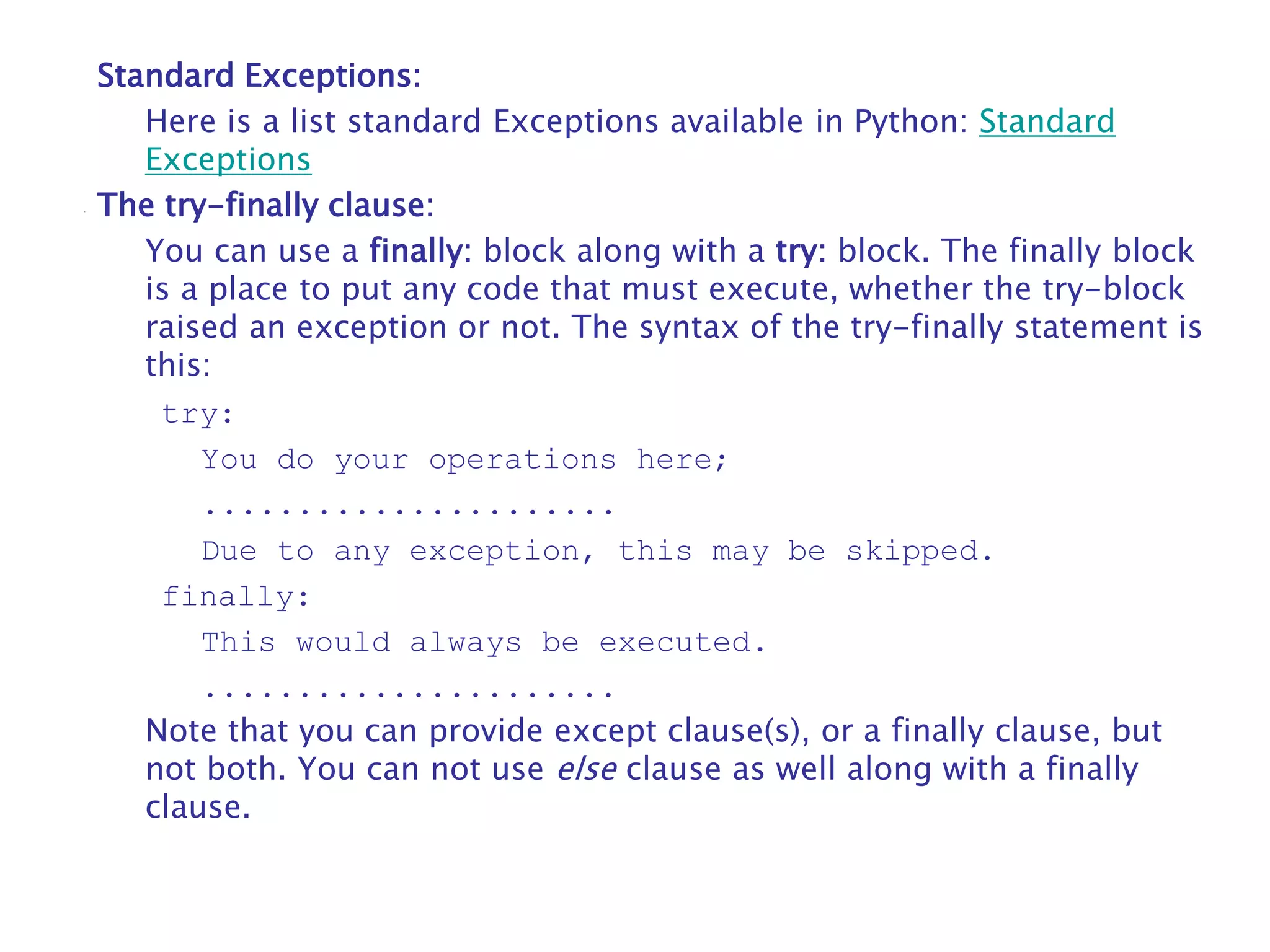

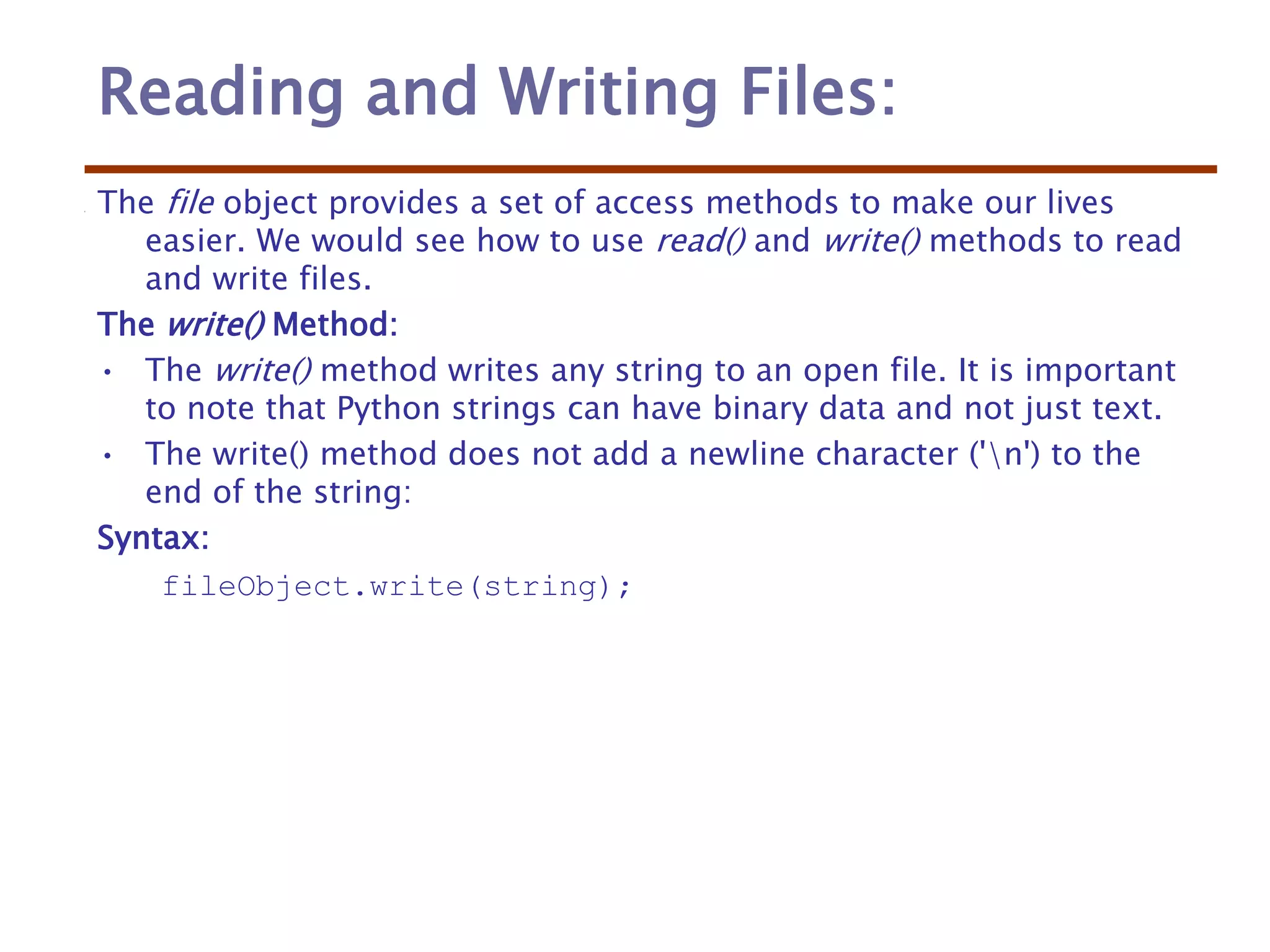
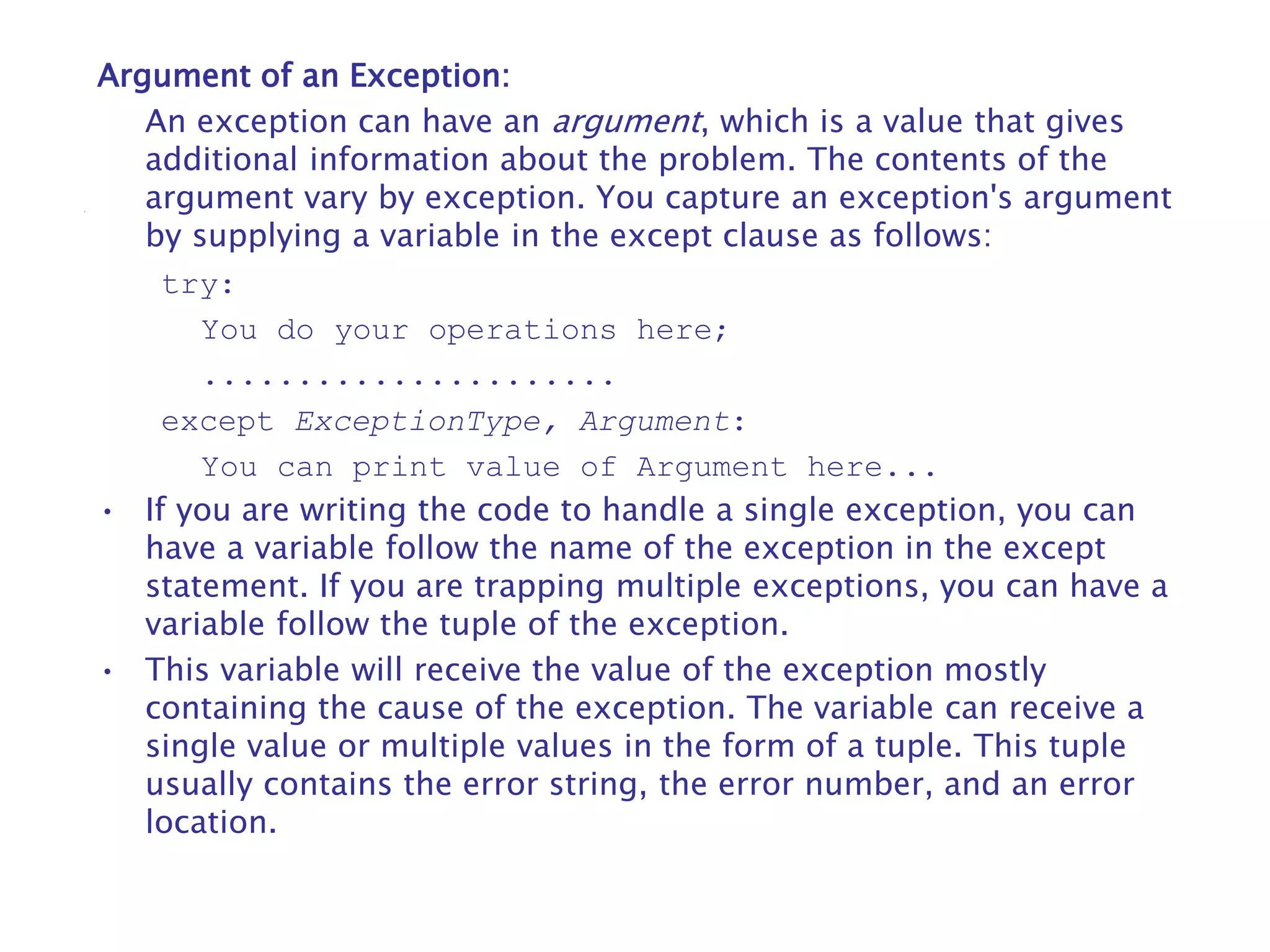
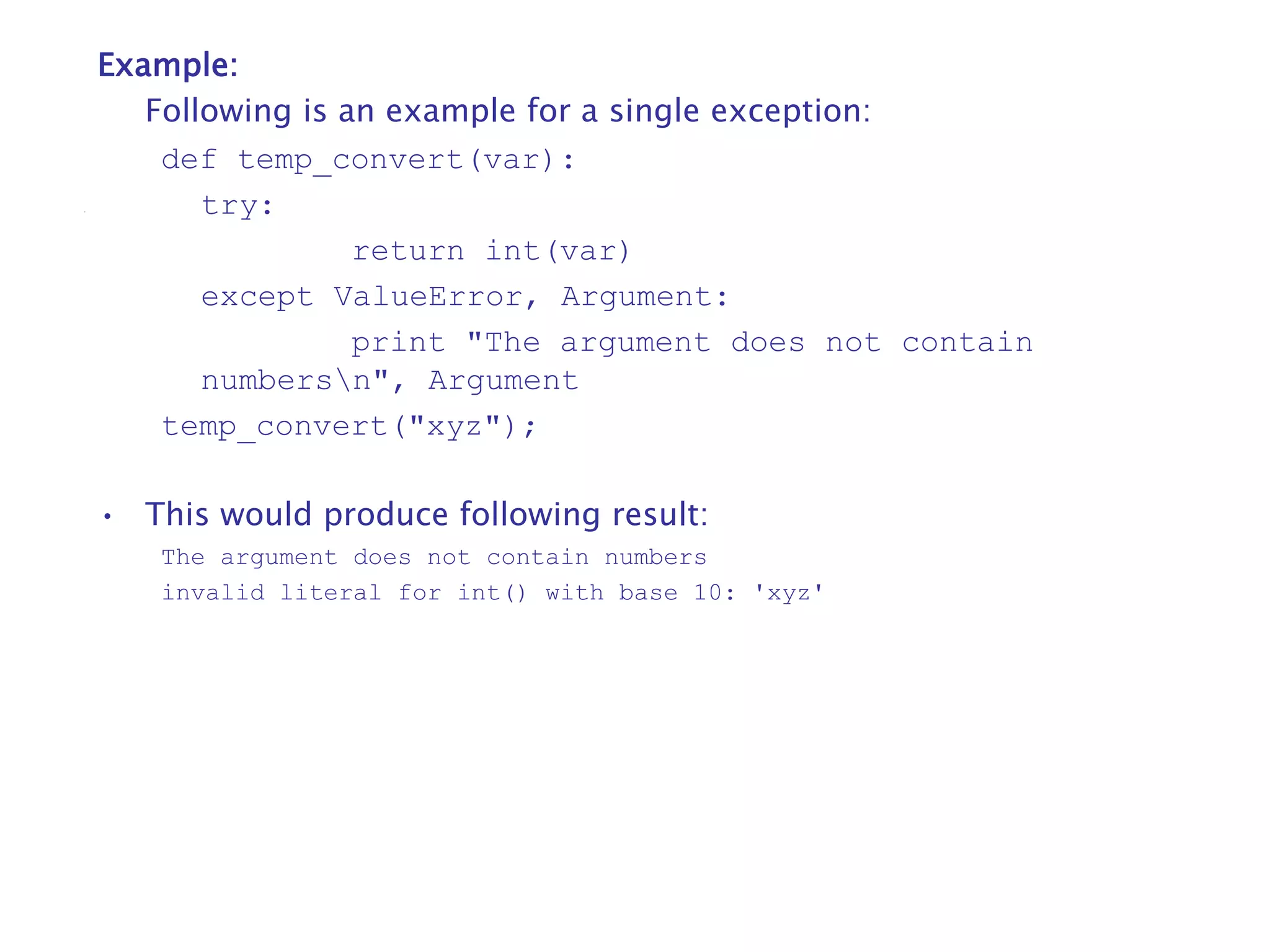
![Raising an exceptions:
You can raise exceptions in several ways by using the raise
statement. The general syntax for the raise statement.
Syntax:
raise [Exception [, args [, traceback]]]
• Here Exception is the type of exception (for example, NameError)
and argument is a value for the exception argument. The argument
is optional; if not supplied, the exception argument is None.
• The final argument, traceback, is also optional (and rarely used in
practice), and, if present, is the traceback object used for the
exception
Example:
def functionName( level ):
if level < 1:
raise "Invalid level!", level
# The code below to this would not be executed
# if we raise the exception](https://image.slidesharecdn.com/py-slides-9-230510132101-3c28df13/75/Py-Slides-9-ppt-12-2048.jpg)
